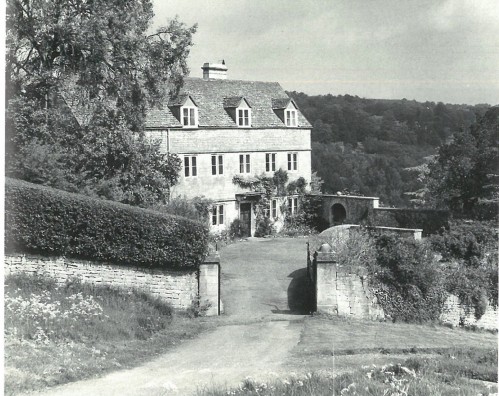As we are in December what could be more appropriate than a blog about winter flowering iris, and in particular Iris unguicularis (formerly stylosa). These irises are native to Algeria as well as Greece, Turkey, Syria, Israel and Lebanon and whilst their foliage in the summer can appear somewhat scruffy, they are well worth growing for the flowers that appear from early winter to mid-spring in the UK.
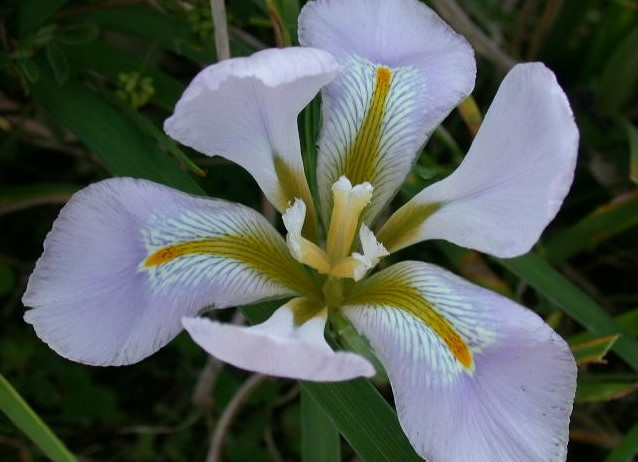
Iris unguicularis ‘Walter Butt’
However, have you ever stopped to think when you go to a nursery or garden centre and pick up a plant that is named, for example Rose ‘Hilda Murrell’ who the person might be or have been after whom the plant was named?
One such named plant is Iris unguicularis ‘Walter Butt’. This iris was ‘introduced’ by E.B. Anderson in 1962 and in his book ‘Seven Gardens or Sixty Years of Gardening’ published posthumously in 1973, he wrote:
…‘It has been my fortune to become possessed of certain plants of merit and as a wise precaution I have distributed stock to friends, but I have often found that statements about them are incorrect and therefore I think it is desirable to put facts on record’…
….‘This lovely iris was observed in the Porlock garden of the late Walter Butt, who told me that it was collected by a friend, near Algiers. It is noteworthy because of its size, very pale lavender flowers, almost white in the sun, and its strong perfume – the strongest he knew according to the late E.A. Bowles, to whom, naturally, as a lover of such delights, I had given a piece.’..
So who was Walter Butt? Walter Butt was born in 1880 the second child and first son of the Reverend Walter William Arthur Butt and Fanny (Tower) Butt. Sadly, Fanny died aged 29 in early 1886, shortly after giving birth to her sixth child.
The Revd Walter Butt’s father was Thomas Walter Packer Butt, who was a considerable landowner having benefited from the Enclosure Act and having bought land at Cheltenham in Gloucestershire. Thomas Butt rebuilt the family home Arle Court in Cheltenham between 1854-58. Along with the new house, Thomas Butt kept a beautiful garden.
On Wednesday 12 June 1861 it was noted in the Cheltenham Examiner…
‘We observe that Mr. Hamilton, gardener to T.P.W. Butt, Esq, of Arle Court, gained the first prize of £10 for his collection of variegated foliage plants at the Horticultural Society’s Show, in Kensington Gardens, on Wednesday last. There were 18 competitors in this class, but Mr. Butt’s collection was pronounced, as beyond comparison, the choicest on the stand. The same plants will, I believe, be exhibited at Pittville to-day, where they will, no doubt, be equally fortunate in securing the “blue ribbon” of the meeting.’
And again on Wednesday, May 22, 1889 The Cheltenham Examiner reported on the Cheltenham Spring Flower Show
‘….In the collections of six (cinerarias), Mr. T.P.W. Butt, of Arle Court, obtained the chief distinction……
Results: Cinerarias Ditto, collections of 6 – 1, Mr T.P.W. Butt (gardener, G Marsh) ……..’
Thomas Butt was still showing in November 1893 at the 23rd annual show of the Cheltenham Root, Grain, Butter, Chrysanthemum and Winter Flower Exhibition Society where he gained a credible second prize for his chrysanthemums. He gained three first prizes and four seconds in all. Revd Walter Butt having chosen to enter the church, on inheriting Arle Court in 1900, sold off the house.
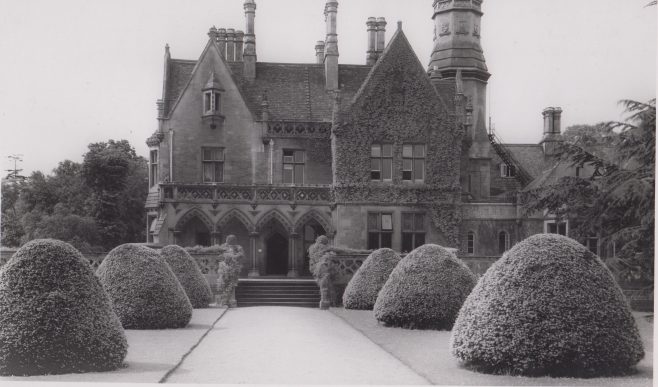 Arle Court, Cheltenham
Arle Court, Cheltenham
So where did Walter Butt’s interest in plants come from? He would have known Arle Court and the gardens, but also his father the Revd Walter Butt was an antiquarian and botanist. He was a member of the Cotteswold Naturalists’ Field Club which had been set up in 1846…..’the object of the Club shall be to investigate the Natural History, Antiquities and Agriculture of the Cotswold District and its neighbourhood’….. In the early 1900s Revd Butt became president of the Club and at the winter meeting in 1905 he proposed creating a Flora of Gloucestershire. This was taken forward by members and the ‘Flora of Gloucester’ was published in 1948 written by Revd Butt’s son-in-law H.J. Riddelsdell, husband of his daughter Maud, as well as G.W. Hedley and W.R. Price.
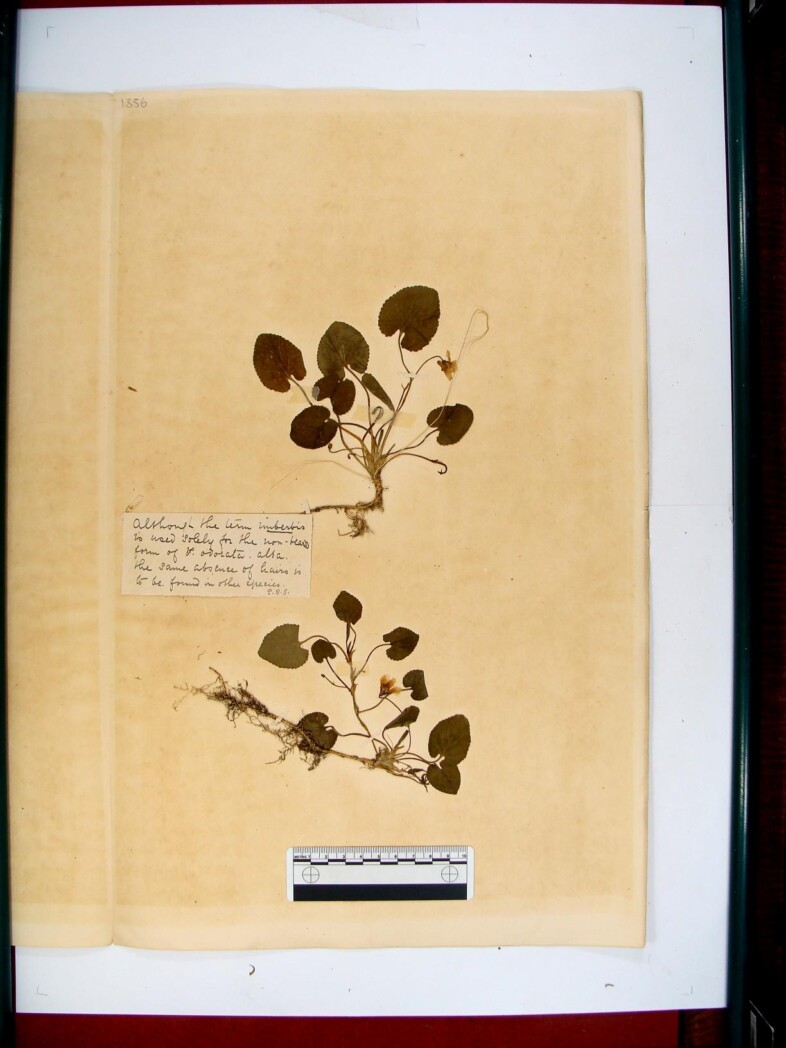
Herbarium specimen collected by Gustavus St Brody

Herbarium specimen collected by Revd Butt
The Revd Walter Butt collected his own herbarium specimens and his herbarium was donated to Gloucester Museum by his son, joining the herbarium of Gustavus A Ornano St Brody which Revd Butt had found at the Museum and had preserved at his own expense before returning it to the museum. St Brody was collecting specimens from 1872 to 1891. These herbariums are vital sources today showing the diversity of the wild flowers in Gloucestershire at the end of the 19th Century and the beginning of the 20th Century. Sadly, Revd Walter Butt died in 1917 before he could see the completion of the project he had instigated.

Postcard advertising the Royal International Horticultural Exhibition
Not only was Revd Butt keen on wild flowers, he was also present at a meeting of the Gloucestershire committee discussing the Royal International Horticultural Exhibition which was held in the Royal Hospital Gardens, Chelsea in 1912 and was the precursor to the world renowned Chelsea Flower Show which was first held in the Royal Hospital Gardens the following year, 1913! Although the Royal Horticultural Society regularly held its ‘Great Spring Show’ in Temple Gardens in London, the last time a horticultural exhibition had been held in Britain was back in 1866. It was felt that now was the time for a big exhibition and the grounds of the Royal Hospital, Chelsea were chosen for their size and central position. The exhibition was held over 8 days and nearly 200,000 visitors came to see it. There were numerous prizes sponsored by individuals, counties and institutions. Gloucestershire donated a cup and this was awarded to Messrs J Cypher and sons of Cheltenham, a well-established nursery, for an exhibit showing plants and orchids.
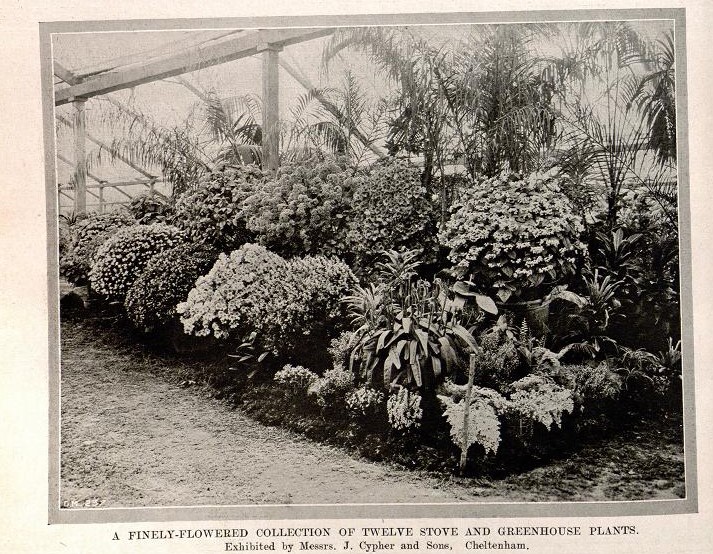 Photo from The Gardeners’ Chronicle 1912
Photo from The Gardeners’ Chronicle 1912
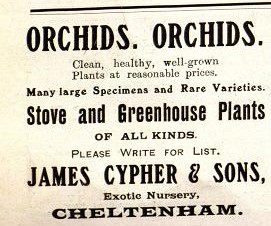
Advertisement from The Gardeners’ Chronicle
So the young Walter was brought up by a plant loving father and this influenced him later in life. He married Lucy Massey on 10 January 1904 and by 26 January they had arrived in New York. Butt was registered as a farmer and it was possible that he was considering emigrating to Canada to try his hand at farming. His daughter, Beatrice was born on 29 August 1905 at Halton in Ontario, Canada.
However, things either didn’t work out or he was drawn back home because by 1911 he was living in Sussex. But it was in 1920 that he began his first major garden at Hyde Lodge in Chalford, Gloucestershire. He gardened there for 20 years. Butt had cleared and planted the 3 hectare site himself and had one of the finest collections of shrubs and trees. He sold Hyde Lodge as it had become too big for him and luckily it was bought in 1947 by Brigadier Leonard Mathias DSA and his wife Winifrede. By this time the garden had become somewhat overgrown but Walter Butt had left behind a legacy. As the snow cleared in early 1947 under the tangle of shrubs and brambles snowdrops were poking through. These were no ordinary snowdrops, but long stemmed with giant flowers and broad leaves. When consulted Butt said they must be G ‘Arnott’s Seedling’ which he had got from Colesbourne Gardens. By 1951 the snowdrops had multiplied and Winifrede Mathias along with her gardener Herbert Ransom, who was to become an expert on snowdrops, exhibited the Hyde Lodge Snowdrops at the RHS Spring Show. From this beginning the Giant Snowdrop Company was born and went on to trade for 16 years, bringing snowdrops to the fore and laying the foundations for their popularity today.
Walter Butt moved to Porlock in Somerset and bought a house called Bales Mead with a smaller garden…….
‘In 1940 Walter Butt, who had planted a large garden at Chalford near Stroud, decided that it was too big for him to carry on under war conditions and looking round for a house in a milder district, heard from Norman Hadden that there was one for sale near him and this, Bales Mead, he bought. Walter Butt was a man with a very extensive knowledge of trees and shrubs who unfortunately, or perhaps wisely, never put pen to paper. Not only did he know plants but also which were the best varieties’. From Seven Gardens or Sixty Years of Gardening by E.B. Anderson
He had soon filled the garden surrounding the house, so he rented a piece of woodland on the hillside above. Again he cleared the undergrowth and brambles himself and established a woodland garden. Sadly his wife died in 1942 aged 61. He lived at Bales Mead until 1950 although by this time he was crippled with arthritis and knowing Bertram Anderson, who was a friend of Norman Hadden and had visited Bales Mead regularly, was about to retire, offered to sell him the house.
When visiting Butt, Bertram Anderson had noted…
‘To deal with the notable plants in the house garden first: I had noticed Iris unguicularis ‘Walter Butt’ growing against the south wall of the house on one of my visits and I was told that it was found by a friend of Walter Butt’s near Algiers; a piece was moved to Rickmansworth throve and from this I gave a piece to E.A. Bowles, who said it was the largest and sweetest-scented form he knew…..’
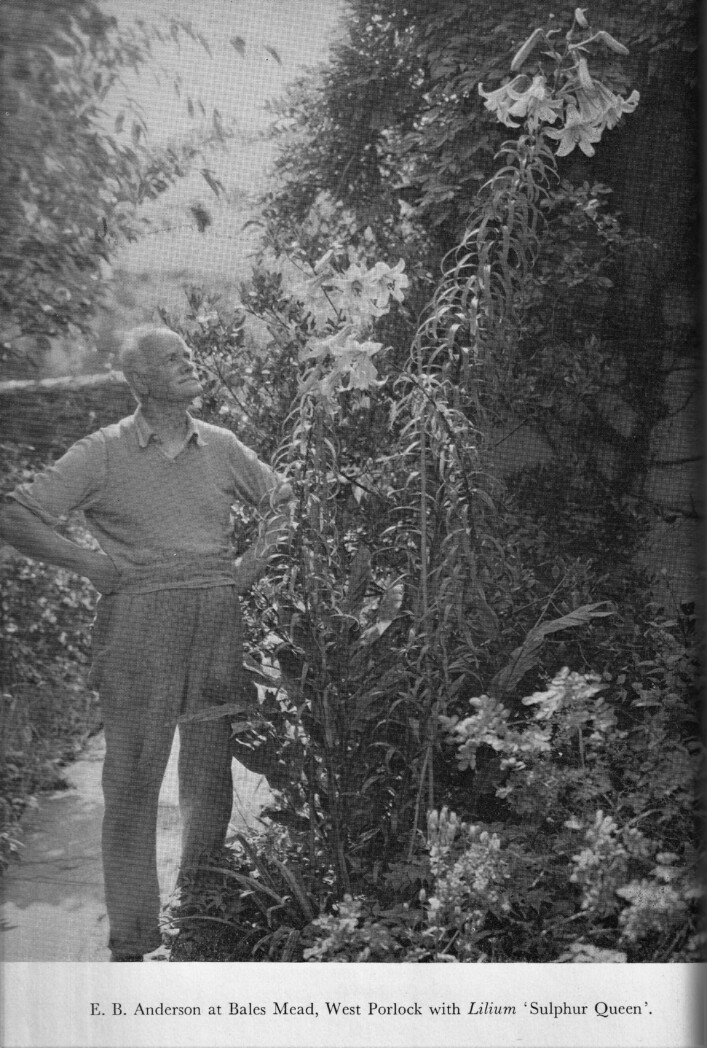
Bertram Anderson gardened at Bales Mead for 10 years and in that time enhanced Butt’s collection of plants, although he only made one new planting in ‘Butt’s Wood’, as he named the woodland garden, as there was little room for more. He recollects….
‘Walter Butt never labelled a plant [something that the Mathias’s had found out with Butt’s snowdrop collection] but kept a notebook which would read ‘Rhododendron thomsonnii’, S. of central path’, or ‘Cornus capitata, on N. boundary’, so I had to sort out which was what, made no easier because no entry had been made if a plant had died or been removed to another position….’
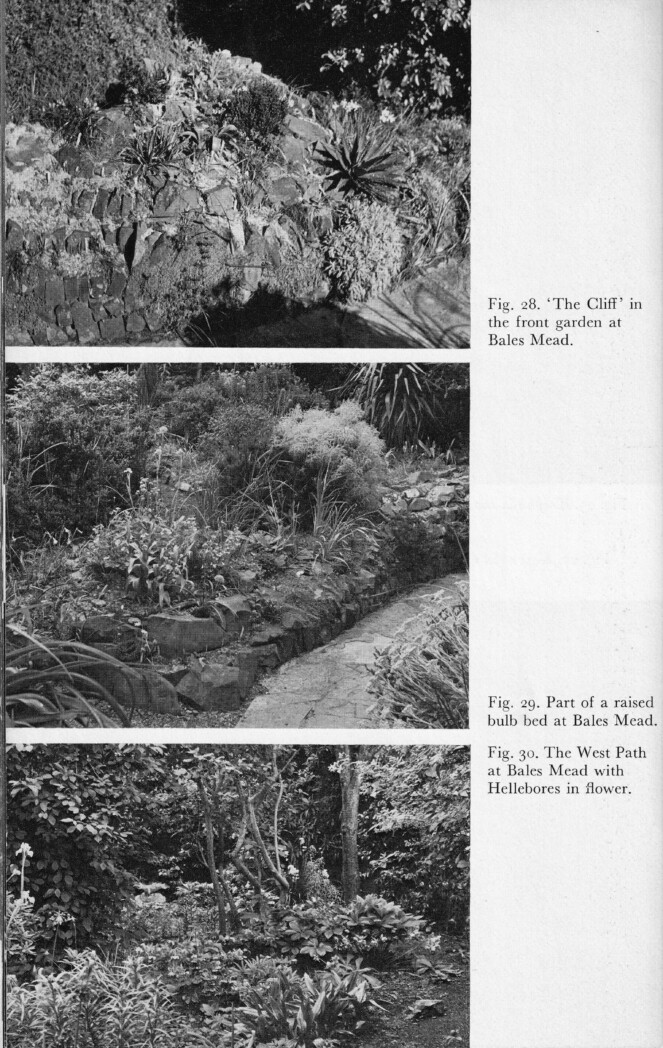
Walter Butt died in Bristol in 1953 aged 73. His legacy to the horticultural world not only includes a beautiful iris that brightens the long, dull winter months, but the huge interest in snowdrops that still abounds today.
So at this time of the year when giving is very much on our minds, spare a thought for the person behind that named plant, who through his love of plants and flowers, generously shared his iris with a friend.
Further reading:
The Royal International Horticultural Exhibition 1912 – https://www.essexgardenstrust.org.uk/chronicles/2019/4/14/before-chelsea-the-royal-international-horticultural-exhibition-of-may-1912
Information about The Giant Snowdrop Company can be found here: https://museuminthepark.org.uk/the-giant-snowdrop-company
Article from The Plantsman 2013 Vol 12 Part 4 Dec: The Giant Snowdrop Company https://static1.squarespace.com/static/5bab72ad4d8711423bd945e7/t/6025250cd05ca1411e986c60/1613047135387/The+Plantsman%2C+2013+Vol12+Part+4+Dec+-+Giant+Snowdrop+Company+v2.pdf

